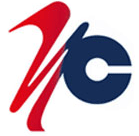
Shvaya A. Visual discourse of president elections in France: Iconofraphic analysis of official candidate posters. Vlast' i elity [Power and Elites], 2019, Vol. 6 (2), pp. 134–155.
Shvaya A. Visual discourse of president elections in France: Iconofraphic analysis of official candidate posters. Vlast` i elity [Power and Elites], 2019, Vol. 6 (2), pp. 134–155.
Глава из книги: Власть и элиты. 2019. Т. 6. № 2. 208 с.
ISSN 2410-9517
DOI 10.31119/pe.2019.6.2.5
Posted on site: 30.12.19
Abstract
Given the trend of increasing the role of visual in contemporary culture, it should be actualize in studies of political elites and their representations. The most significant field here is production of such representations during the elections. The regularity of these events allows us to trace the patterns of visual discursive practice on a large array of images. Working with highly institutionalized campaign posters (affiches) of French presidential candidates, we need to justify the admissibility of considering these images as independent of other systems of representation. For this purpose in this study on the one hand, the relevance of the posters is affirmed, and on the other, it is proved that they are autonomous media with their own structure and code for representing the candidate. When the main characteristics of image institutionalization was identified, the most Визуальный дискурс президентских выборов во Франции... 154 appropriate explanatory model was chosen. It was party and ideological affiliation of candidates, which allowed describing the image code of the applicant for the highest elected position in France. Through iconographic analysis, a group of marginal representations was identified, among which those that violate the existing genre configuration were especially distinguished. Despite this, it is precisely such discursive practices that make it possible to identify what strategies are most effective in situations where it is impossible to include visual discourse in the current model. At the same time, they construct and consolidate a repertoire of expressive means, which in the future may be involved in the representations of other marginal candidates and leaders in the second round. Thus, during the study, it is possible to identify the structural characteristics of pre-election posters as the main channel for the representation of candidates. Moreover, these characteristics are explicated through the determination of the regimes of visual perception of those running for the presidency, which makes it possible to more closely trace the transformation of the image code of candidates and thereby understand the conditions of voters’ trust in them.